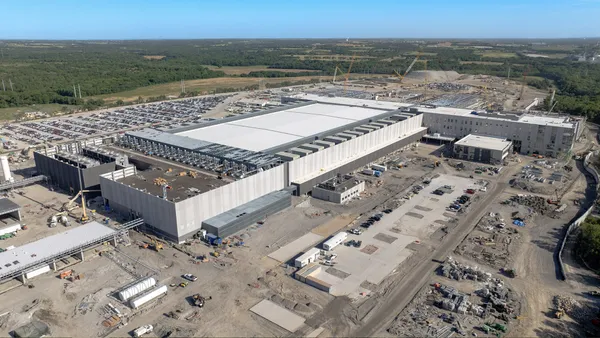Homes and buildings are the bedrock of our daily lives, providing us with shelter, comfort, and spaces to create, work, and live. These structures are so integral to our routines that it's easy for others to take for granted the vast, complex industry that makes them possible. As we know, each space is the result of countless hours of labor and ingenuity within the construction sector.
As the backbone of our physical world, the slow-to-adapt construction industry would do well to begin to embrace the digital revolution. Doing so not only promises to enhance the efficiency and sustainability of construction projects but also ensures that the industry remains competitive and capable of meeting the evolving demands of society.
Reasonably reluctant
A reluctance to embrace change stems from a variety of factors, including a preference for tried-and-true methods, the perceived high cost of technology adoption, and the complexity of the industry. However, this resistance is often a false economy. The initial investment in modern technology can lead to substantial savings and efficiencies in the long run.
Digital payments, for example, have the potential to impact the construction industry in profoundly positive ways when properly implemented. Digital payments can improve business in the construction industry through enhanced financial management. With digital transactions, every payment is recorded in real-time, providing a transparent, accurate, and up-to-date financial overview. This level of detail is invaluable for budgeting, forecasting, and auditing purposes.
Virtual cards, a form of digital payments, are a prime example of a technology that the industry has been slow to adopt. A virtual card is an electronic card that can be used for online or over-the-phone transactions, without the need for a physical card. Each virtual card is equipped with unique card details which are generated for a single use or for multiple uses within a set period or budget limit. This uniqueness greatly reduces the risk of fraud since the details are harder to intercept.
Despite these benefits, the adoption of digital tools in the construction industry has been slower than others. Luckily, there are some steady ways to get the ball rolling.
The path to modernization
For construction companies ready to embrace the inevitable, the journey toward modernization involves some key steps.
- The first step is acknowledging the need for change. This involves a shift in mindset, from viewing technology as an unnecessary expense to a vital investment in the company's future. It requires leaders who are willing to champion technological adoption and drive the company towards modernization.
- Leadership workshops: Organize workshops and seminars that highlight the benefits of digital transformation, aiming to shift the perspective on technology from a cost center to a strategic asset.
- Success stories: Share case studies and success stories of other construction firms that have successfully implemented digital technologies, demonstrating tangible benefits and competitive advantages.
- Innovation audits: Conduct audits to assess current technological capabilities versus industry standards, helping to identify gaps and areas for improvement, thereby creating a compelling case for change.
- The next step is to identify the areas of operation that would benefit most from digital transformation. For many construction firms, financial management is a logical starting point, given the immediate benefits that technologies like virtual cards can offer in terms of efficiency and security.
- Comprehensive needs assessment: Perform a thorough analysis of all business operations to pinpoint inefficiencies, potential cost savings, and areas where technology could have the most significant impact, such as invoice automation and purchasing workflows.
- Stakeholder surveys: Engage employees, suppliers, and customers through surveys to gather insights on where improvements are needed most, ensuring that the digital transformation aligns with internal and external expectations.
- Benchmarking against competitors: Analyze how competitors are leveraging technology in their operations, identifying areas where digital adoption could provide a competitive edge or is necessary to maintain market position.
- Implementing new technologies requires careful planning and execution. This includes selecting the right tools that align with the company's specific needs, training staff on how to use these tools effectively, and integrating them into existing workflows.
- Customized training programs: Develop training programs tailored to the specific technologies being adopted and the roles of the employees using them, ensuring higher engagement and better utilization of new tools.
- Pilot programs: Start with pilot projects for selected technologies to test their effectiveness and adjust strategies before a full-scale roll-out, minimizing risks and allowing for iterative improvements.
- Performance tracking and feedback loops: Establish clear metrics for success and regular feedback mechanisms to monitor the impact of new technologies, allowing for continuous improvement and adjustments based on real-world performance.
Strengthening business goals and values
Modernization is not just about adopting new technologies; it's about aligning these technologies with the company's broader business goals and values. For construction companies, this means leveraging digital tools such as digital payments to enhance operational efficiency, improve financial management, and deliver higher-quality projects to clients.
Ultimately, the modernization of the construction industry is a gradual process, one that requires a willingness to change, a strategic approach to technology adoption, and a commitment to aligning these technologies with the company's long-term vision. Embracing digital tools can lead to significant improvements in efficiency, security, and cost management–and save some paper along the way. However, for the construction industry at large to move forward, it will require a collective effort to overcome hesitancy, invest in technology, and align these innovations with business goals and values. In doing so, the construction industry can build a future that is not only more efficient and secure but also more adaptable to the challenges of the 21st century.










